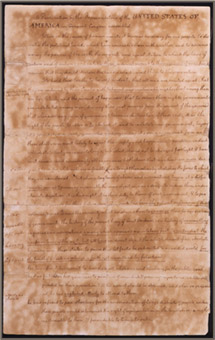|
“Magna Brittania: her Colonies Reduc’d,” ca. 1766 |
 |
She never wounds till she has generously given notice, even to her enemy, and cautioned him against the danger of treading on her.… a strong picture of the temper and conduct of America. —Benjamin Franklin, “The Rattle-Snake as a Symbol of America,” The Pennsylvania Journal, December 27, 1775 |
|
|
 |
|
From his base in England, Franklin was out of touch with the mood of his countrymen and seriously underestimated the intensity of colonial anger against the Stamp Act of 1765. In a rare misstep, he continued negotiating towards a compromise—but the tensions between the colonies and Great Britain were already irreconcilable.
In 1774, in the wake of the Boston Tea Party and in the midst of colonial cries for no taxation without representation, Franklin was summoned by solicitor-general Lord Wedderburn to appear before the British Privy Council. There he was accused of treason against the Crown and publicly humiliated—yet Franklin remained silent throughout the ordeal. This was a moment of epiphany, as Franklin came to realize that compromise—for once—was unlikely to carry the day. He left London for the colonies where he added his voice to the growing insurgency. On July 4, 1776, the American colonists declared their independence from Britain. |

